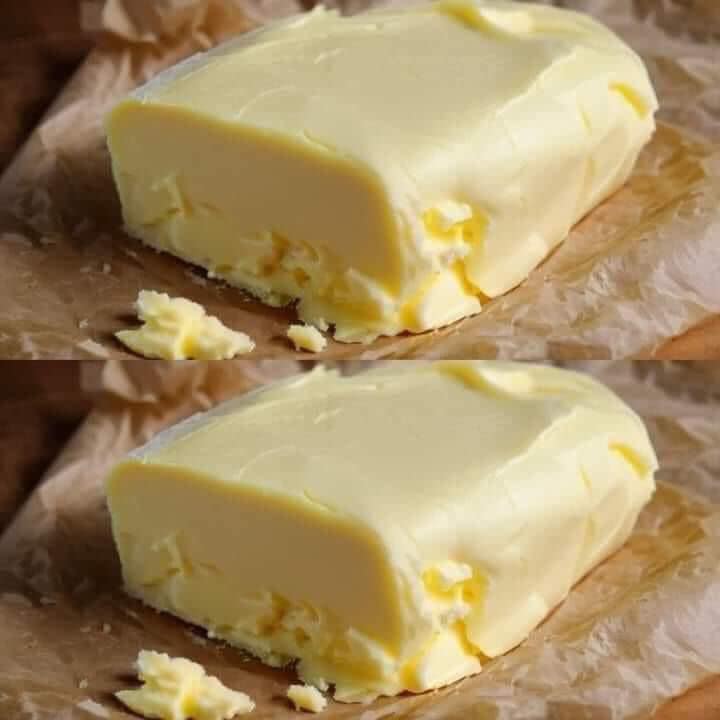News
Homemade Butter

Ingredients:
Heavy cream (also called whipping cream) – 2 cups (about 500 ml)
Salt (optional) – 1/4 to 1/2 teaspoon (for salted butter)
Cold water – 1/4 cup (for rinsing)
Instructions:
Prepare the cream: Pour the heavy cream into a large mixing bowl or the bowl of a stand mixer. If you have a hand mixer or blender, you can also use those.
Whip the cream: Start mixing the cream on low speed, gradually increasing to medium-high. At first, the cream will turn into whipped cream, but continue beating.
Churn the butter: After a few minutes, you’ll notice that the whipped cream will start to separate into butter and buttermilk. The butter will clump together and the buttermilk will begin to separate out. This process usually takes about 10-15 minutes.
Drain the buttermilk: Once the butter has separated from the buttermilk, stop mixing and drain the buttermilk. You can save the buttermilk for other recipes, like pancakes or bread.
Rinse the butter: Transfer the butter to a clean bowl and add cold water. Gently knead the butter with a spatula or your hands, rinsing away the remaining buttermilk. This helps the butter last longer. Repeat until the water runs clear.
Salt the butter: If you want salted butter, add salt to taste and mix it into the butter.
Shape and store: Once the butter is fully rinsed and salted (if desired), shape it into a block or press it into a container. Refrigerate or store it in the freezer for long-term storage.
Description:
Homemade butter is rich, creamy, and flavorful, offering a fresh, delicious taste that’s perfect for a variety of dishes. The process involves churning heavy cream until the butterfat separates from the buttermilk, which is then rinsed and salted. The texture of homemade butter is much smoother and softer than store-bought butter, and you can adjust the salt content to your liking. You’ll be left with pure, wholesome butter that can be used in cooking, baking, or spread on your favorite bread.
Tips:
Use chilled cream: For better results, use cream that’s cold, as it will churn more efficiently.
Avoid over-mixing: Stop churning as soon as the butter separates to prevent it from becoming too firm or overworked.
Save the buttermilk: The buttermilk is great for recipes like pancakes, muffins, or even as a marinade.
Flavor variations: You can add garlic, herbs, or spices to the butter after it’s made for a delicious flavored butter.
Storage: Homemade butter keeps in the fridge for up to 1-2 weeks or can be frozen for longer storage. Be sure to store it in an airtight container.
Corrections (Common Mistakes and Fixes):
Butter isn’t separating from buttermilk: Make sure the cream is chilled and that you’re mixing at the correct speed. Sometimes, if the cream is too warm, it might take longer to separate. Try chilling the bowl and cream before mixing if this happens.
Butter is too hard after refrigeration: This can happen if the butter has been overworked. Try adding a little bit of milk to soften it when you plan to use it, or store it at room temperature for easier spreading.
Over-salted butter: If you accidentally add too much salt, you can correct it by making another batch of unsalted butter and mixing it together.
Butter too greasy: This can occur if too much buttermilk wasn’t rinsed off. Ensure that the water runs clear during the rinsing process to remove all excess buttermilk.
